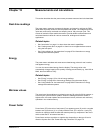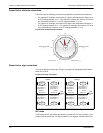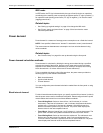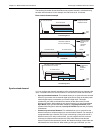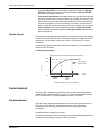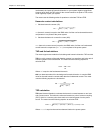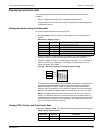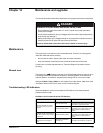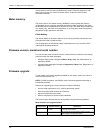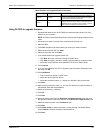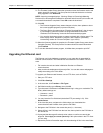
HRB1684301-01 117
Chapter 13 Power quality
This section describes the meter’s power quality features and how to access power
quality data.
The meter measures voltage and current harmonics up to the 63rd harmonic, and
calculates Total Harmonic Distortion (THD) and Total Demand Distortion (TDD and
tdd).
Harmonics overview
Harmonics are integer multiples of the fundamental frequency of the power system.
Harmonics information is valuable for power quality analysis, determining properly
rated transformers, maintenance and troubleshooting.
Harmonics measurements include per-phase magnitudes and angles for the
fundamental and higher harmonics relative to the fundamental frequency. The meter’s
power system setting defines which phases are present and determines how line-to-line
or line-to-neutral voltage harmonics and current harmonics are calculated.
Harmonics data provide information to determine how non-linear loads affect the power
system. For example, power system harmonics can cause current flow on the neutral
conductor, increase heating in electric motors, and eventually damage connected
equipment. Power conditioners or harmonic filters can be used to minimize unwanted
harmonics.
Crest factor and K-factor
Crest factor is the ratio of peak to RMS voltage values. For a pure sinusoidal waveform,
crest factor is equal to 1.414. The meter uses the following equation to calculate crest
factor:
K-factor relates the heating effect of a distorted current in a transformer to a sinusoidal
current with the same RMS magnitude — it describes a transformer’s ability to serve
non-linear loads without exceeding rated temperature rise limits. The K-factor is equal
to the sum of the squares of the harmonic currents multiplied by the squares of the
harmonic order. The meter uses the following equation to calculate K-factor:
Where h is the harmonic order and Ih is the true RMS current of harmonic order h.
Total Harmonic Distortion and Total Demand Distortion
Total Harmonic Distortion (THD) is a measure of the total per-phase voltage or current
harmonic distortion present in the power system. It provides a general indication of the
quality of a waveform. THD is calculated for each phase of both voltage and current.
Total Demand Distortion (TDD) is the per-phase harmonic current distortion against the
full load demand of the electrical system. TDD indicates the impact of harmonic
distortion in the system. For example, if your system is showing high THD values but a
Crest factor
V
peak
V
RMS
---------------=
K-factor Ih
2
h
2
h1=
=



